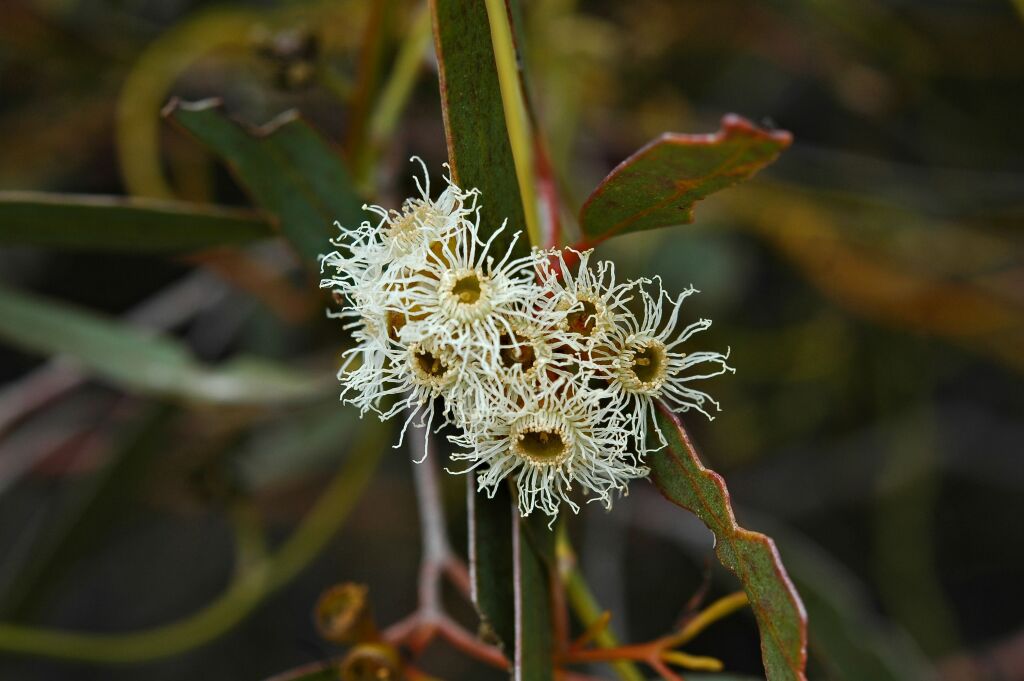Eucalyptus phenax subsp. phenax
Mallee; bark smooth or with loose ribbons at base. Pith of branchlets glandular. Juvenile leaves petiolate, alternate, ovate to lanceolate, dull, green; adult leaves petiolate, alternate, lanceolate, 7–13 cm long, 1–2 cm wide, concolorous, glossy, green; reticulation dense, with erose veinlets, oil glands numerous, mainly intersectional. Inflorescences axillary, unbranched, peduncles to 1.5 cm long, 7-flowered; buds sub-sessile or sessile, oblong, to 1 cm long, 0.5 cm diam., scar present; operculum conical to slightly beaked; stamens infiexed; anthers dorsifixed, cuneate; ovules in 4 vertical rows; flowers white. Fruit sessile, cupular to cylindric, to 0.8 cm long, 0.7 cm diam.; disc descending; valves 4, to rim level; seed lustrous ruby-red, flattish, with distinct, shallow reticulum, hilum ventral. Flowers summer–autumn.
LoM, MuM, Wim, RobP, GipP. Also WA, SA. In Victoria, in mallee scrubs north from the Little Desert.
Distinguished from E. dumosa by the predominantly glossy green leaves and more or less sessile buds and fruit. Eucalyptus phenax has been incorrectly known as E. anceps, a synonym of the South and Western Australian species, E. rugosa.
Thought to hybridise with E. wimmerensis at the southern edge of its range (see E. x macmahonii)
 Spinning
Spinning

